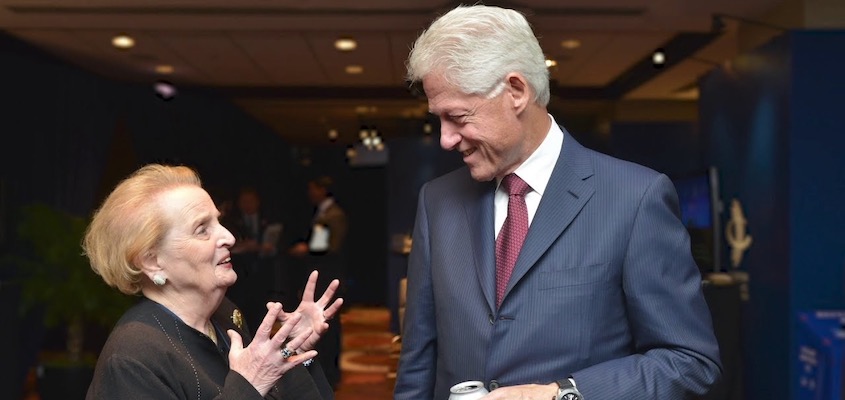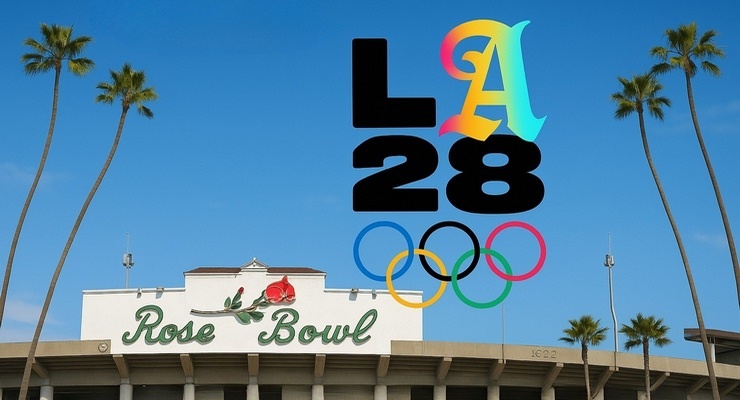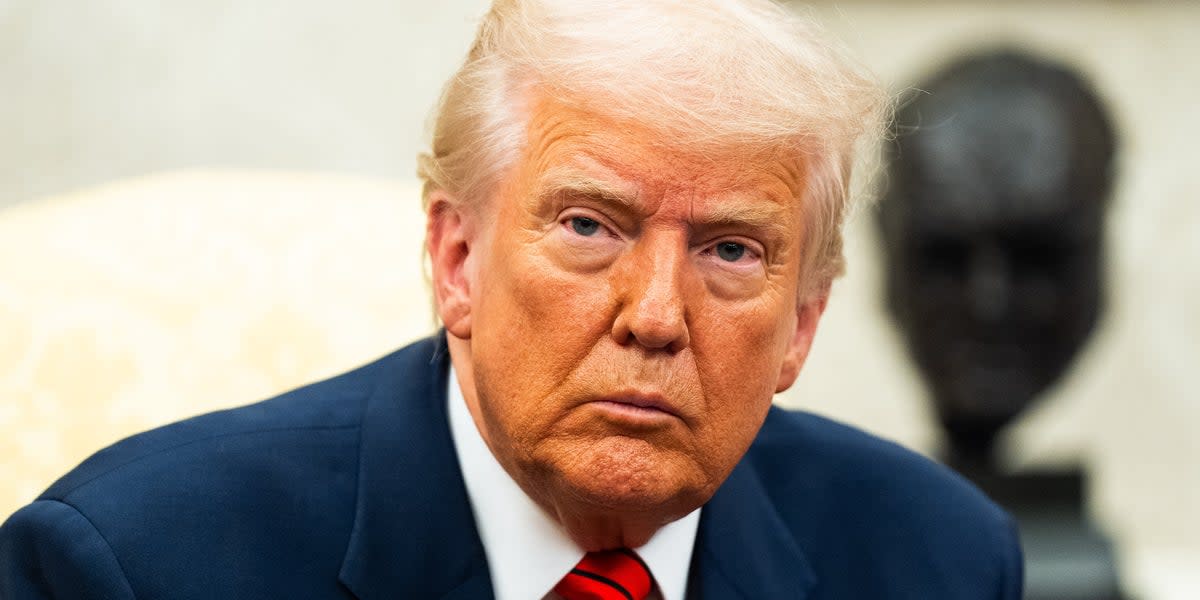The cases of Bosnia and Rwanda are the most often cited in arguments for humanitarian war, Bosnia as a case in which the US and NATO intervened, Rwanda as a case in which they did not, but the truth of both histories is disputed. I spoke with Judi Rever, author of “In Praise of Blood: Crimes of the Rwandan Patriotic Front ,” a book that upended the received history of the Rwandan war and genocide of 1990 to1994.
ANN GARRISON: Judi, the story that most people know, the one that’s in the Wikipedia and more or less told in the movie Hotel Rwanda, is that, in April, 1994, Rwandan Hutus were suddenly consumed by mass psychosis and ethnic bloodlust, and killed half a million to a million Rwandan Tutsis. And that they were egged on by La Radio des Milles Collines in Kigali. Then they were saved by General Paul Kagame, who appeared—in the movie—out of nowhere.
And before going on, I think I should say that our friend Paul Rusesabagina, the real life hero of Hotel Rwanda, is now in prison in Rwanda because for one, he has a much more complex view of what actually happened than that portrayed in the movie.
So tell us what really happened.
JUDI REVER: Well, that story that you described more or less was forged in a climate of terror, violence, and propaganda. It was put together fairly quickly as the dust was settling in July, 1994. And in the months and years after the Rwandan Patriotic Front (RPF) led by General Paul Kagame seized power in Rwanda. My book tells the story of what began in 1990, when the RPF invaded from their base in Uganda, then waged a three and a half year scorched earth campaign against northern rural Rwanda, uprooting about a million Hutus in the north and sending them into displacement camps in terrible conditions, and killing many, many Hutus in the north. And that set the stage for the conflict to come.
And so my book is really a reexamination of the genocide. And by that, by the genocide, most people mean the Tutsi genocide, but I also document Hutu genocide. There are various estimates as to how many ethnic Tutsis were killed in Hutu controlled zones in Rwanda, from April to July. And some of those estimates range from 400,000 to a million people. And the West, when it’s being generous, adds that there were something called “moderate Hutus,” Hutus who supposedly resisted the violence that other Hutus waged or who were opponents of the predominantly Hutu government led by President Juvenal Habyarimana.
That’s the official story, but my book tells a different story. And what my book actually says is that Kagame’s RPF unleashed the genocide by creating conditions of violence before April 6, 1994, then shooting down the plane that carried the Hutu President Juvenal Habyarimana and his Burundian counterpart, and the assassination of those two presidents unleashed a wave of ethnic massacres. So the RPF is responsible for the terrible massacres that ensued as soon as the plane was shot down.
And then the RPF, according to the research I’ve done for many, many years, started to kill, in a systematic, organized way, Hutus from the north down to the east of the country in every zone that its troops seized. Kagame’s RPF therefore committed its own genocide against Hutus all the while that Tutsis were being targeted for mass extermination in Hutu controlled zones. The other thing I say in my book, and this is backed up by very sound evidence, some of which came from International Criminal Tribunal on Rwanda (ICTR ) confidential documents, is that Tutsi commandos, or rather RPF commandos, infiltrated Hutu militia, and themselves killed Tutsi civilians during the genocide. So the RPF fueled the genocide against Tutsis to justify seizing power. That’s basically a summary of what my research reveals.
AG: That story is told in “How Paul Kagame Deliberately Sacrificed the Tutsis ” by former Rwandan diplomat Jean-Marie Ndagijimana.
JR: Yes, that book is an important contribution to understanding what really happened.
AG: Could you tell us about the two UN interventions, which would have been legal, according to international law, but were blocked by the US?
JR: There were two very important international operations or endeavors that were either underway or were proposed. One that was already on the ground was a UN peacekeeping operation in Rwanda , before the plane carrying the Rwandan and Burundian presidents was shot down, and that peacekeeping operation, which was estimated to be about 5,000 UN peacekeepers, could have actually stepped into gear and saved a lot of Rwandans and actually created zones of security for Rwandans once the massacres were unleashed. But the United States did its best to dismantle that UN peacekeeping mission and persuaded the UN to vote to bring those peacekeepers home while that violence was raging. So, in other words, there was ample opportunity to stop the killings, but the US used its influence and pressured the UN to let Kagame’s military campaign proceed. Madeline Albright was at the time Bill Clinton’s Ambassador to the United Nations.
She would not recognize that the killings were intensive and ethnically charged, nor would her colleagues, nor would Bill Clinton at the time. And there was no possibility whatsoever that the US would send its troops in. What was really appalling was that most of the troops who were there already, were actually pulled out. So that was one of the first major UN operations that the US had extraordinary influence over and stopped. And their insistence on inaction destroyed many lives.
At the same time, and this is a subtext, another side of what was going on, the US had access to satellite technology. So Bill Clinton and his advisors absolutely knew what was happening on the ground. They knew that the massacres were going on. I’ve argued in my book that the RPF was loading thousands of Hutus in waves onto trucks and bringing them to Akagera Park, a big park in the east of the country, then killing them there and burning their bodies. And all of these massacres, whether they were Tutsis or Hutus massacred, could be documented in real time by an extensive network of satellites, which pick up fires and which are so sophisticated that they can pick up the slaughter of civilians. The US has used satellite images at the ICTY, which was set up to prosecute crimes in the Balkans, when it wanted to nail, for example, Ratko Mladic.
“There was ample opportunity to stop the killings, but the US used its influence and pressured the UN to let Kagame’s military campaign proceed.”
But of course the US is not going to provide evidence that would implicate one of its allies, in this case Paul Kagame. The US knew was happening on the ground at the time in 1994 and succeeded in having the UN Peacekeepers pulled out.
You mentioned the radio at the beginning of this interview. The US also had the power to jam those radio broadcasts, but it did not. So clearly, what the US wanted, according to what the evidence shows much later, was for Kagame to seize power. It wanted to let his military campaign proceed and it wanted Tutsi genocide to serve as justification for that regime change. But Hutus were prosecuted for what was deemed hate speech over the radio.
The second possible UN led military intervention that was discussed was two years later when Canada rather naively decided that it would lead a multinational force to protect Rwandan Hutu refugees in what was then Zaire. And that was really an attempt to provide a humanitarian corridor inside Zaire, where Hutus had fled after the genocide. More than a million Hutus had lived inside Zaire’s border in a number of camps for two years by that time. Kagame then decided to attack and bust up those camps and force those Hutus home so they could not attack Rwanda from Zaire. That was the cover story, but in fact, what actually happened on the ground, was that the RPF started attacking those camps and killing a lot of Hutu refugees in October, 1996. The multinational force that Canada had proposed never got off the ground.
AG: Why not?
JR: Because the United Nations political insiders, the big wigs, and Washington in particular, ixnayed the whole idea. They dismantled that force before it even got underway. The US did not want a UN led force to protect Hutu refugees because it was seen as a possible impediment to Kagame’s military sweep across the Congo.
So anything for example, that would have documented what Kagame’s forces had done immediately after they invaded and what they did then from the Kivus across the entire country, anything that might have stopped Kagame’s military campaign, was seen as a very bad idea for Washington. So a lot of politicking and diplomatic work went into canceling that multinational force that Canadians had proposed.
And what happened after that is history, of course. Kagame’s forces pushed more than half of those Hutu refugees further into Zaire. They hunted the refugees down, like prey, probably killing several hundred thousand of them, and many more died of exhaustion or hardship in the Zairean jungle. Kagame’s military campaign went all the way to Kinshasa and toppled Mobutu Sese Sekou by May, 1997. And so there was a restructuring of Central Africa, and that war that began in 1996 has decimated the Congo ever since. Millions of people have died, some directly from violence and others from war related diseases. Zaire became the Democratic Republic of the Congo, and that war rages off and on today, mostly in its eastern provinces bordering Rwanda, Uganda, and Burundi.
And the reason I’m insisting on this is because I still hear and read the same propaganda about that period of the counterinsurgency from 1995 to 1998, and I’ve researched three or four major operations during that time where the RPF staged these major attacks that killed villages. Two major operations were cited in ICTR UN confidential documents. This is extraordinary material, which should interest journalists and academics who are trying to understand the complex dynamics of the genocide and the violence that then flowed into Congo. I just wish that people would look at this more closely.
AG: Okay. Now to summarize the intervention history, there was a real UN peacekeeping force in 1994, while the genocide was going on, and the US intervened at the UN Security Council to have it pulled out. And then there was another real humanitarian intervention proposed at the UN that didn’t get very far at all, to protect the Hutu refugees who had fled from Kagame’s Tutsi army into Zaire. The US prevented that as well.
And the one thing I might add is that at that point, Russia and China were not feeling powerful or confident enough on the UN Security Council to oppose the US, and that’s changed. They’ve stood up to the US on Syria, Burundi, and most recently Ethiopia.
JR: That’s a summary. I think you can also say that the US gave Kagame’s troops the green light to invade Zaire and topple Mobutu. There’s no question that they were given the green light and that the US actually worked with Kagame to invade Zaire and overthrow Mobutu. In my book, I discussed a number of ways in which the US helped Kagame topple Mobutu.
AG: I read a really good book “Dying to Live: A Rwandan Family’s Five-Year Flight Across the Congo” by Pierre-Claver Ndacyayisenga .” He says that, at first, when the refugees saw planes overhead, they thought they were going to protect them, but soon realized that they were instead protecting Kagame’s army.
JR: I met Pierre-Claver Ndacyayisenga in Montreal many years ago. It’s a tremendous book. I’m glad you brought it up. He mentioned in that book, the RPF attack on a Hutu refugee camp, Birava Camp, where he and his family were sheltering in 1995. The RPF attacked that camp, killed many people, and injured even more. That’s an important example that never gets reported in the Western media of the RPF attacking camps in eastern Zaire even before they launched an all out invasion to overthrow Mobutu and seize power in 1996. And one extraordinary thing that must be mentioned is that NGOs, human rights organizations, and certainly Western governments, seemed to fall into this sort of consensus that the military invasion of Zaire was justified because Hutu insurgents had been attacking Western Rwanda and threatening to bring genocide back to Rwanda by 1996.
But the RPF had already attacked a refugee camp, the one I just mentioned, and that is chronicled in the book, before they invaded. And the RPF commandos had actually staged a number of false flag attacks on Rwanda from Zaire. The crossed over the border into Zaire, then staged attacks on Western Rwanda and blamed it on the refugees. I’m not suggesting that there were no Hutu insurgencies from Zaire against Rwanda, but there were also false flag attacks to justify Rwanda’s invasion of Zaire.
I think much more honest, rigorous and independent research needs to be done on that.
Ann Garrison is an independent journalist based in the San Francisco Bay Area. In 2014, she received the Victoire Ingabire Umuhoza Democracy and Peace Prize for her reporting on conflict in the African Great Lakes region. She can be reached at ann(at)anngarrison.com







